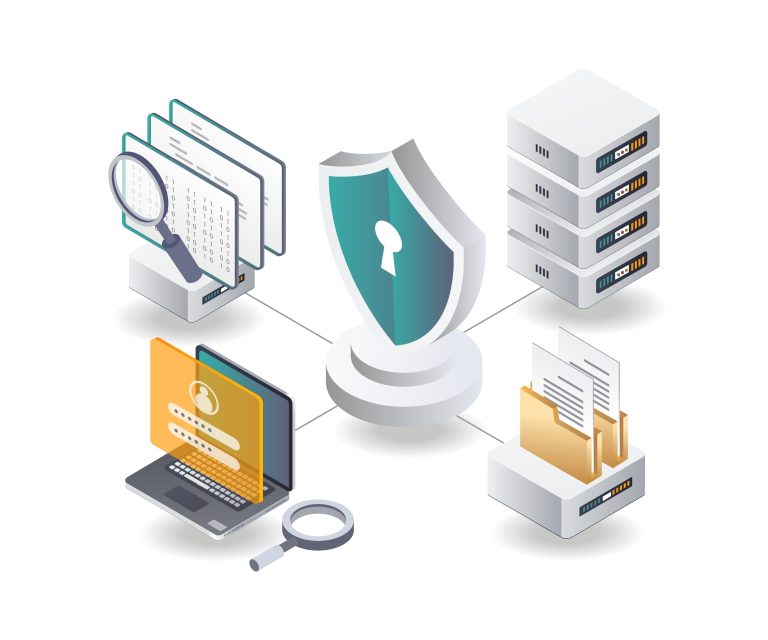
In the ever-evolving landscape of cybersecurity, staying one step ahead of potential threats is imperative. Organizations of all sizes and industries face a constant barrage of cyberattacks, making it essential to adopt a proactive stance in safeguarding their digital assets. Advanced Threat & Vulnerability Assessment is a strategic approach to identify and mitigate security risks, providing a robust defense against an array of cyber threats..
Understanding the Landscape
The digital era has ushered in unprecedented convenience and connectivity, but it has also brought about a new wave of cyber threats. These threats are more sophisticated, diverse, and adaptable than ever before. From ransomware attacks that hold critical data hostage to zero-day vulnerabilities that exploit unknown weaknesses in software, the cybersecurity landscape is rife with challenges.
This shifting landscape demands a holistic approach to security that goes beyond traditional perimeter defenses. Organizations must adopt advanced threat and vulnerability assessments to stay resilient in the face of an evolving threat landscape.
The Essence of Advanced Threat & Vulnerability Assessment
At its core, an advanced threat and vulnerability assessment involves a systematic evaluation of an organization’s digital infrastructure to identify weaknesses, vulnerabilities, and potential threats. This process encompasses several key elements:
>> Asset Discovery: Identify and catalog all digital assets, including hardware, software, data repositories, and network configurations.
>> Threat Profiling: Continuously monitor and profile potential threats based on industry-specific and global threat intelligence sources.
>> Vulnerability Assessment: Conduct thorough assessments to identify known vulnerabilities within the digital infrastructure, including operating systems, applications, and network devices.
>> Risk Evaluation: Assess the risks associated with identified vulnerabilities and threats by considering their potential impact and likelihood of exploitation.
>> Prioritization: Prioritize vulnerabilities and threats based on risk assessment results, and pay attention to those with the highest potential impact.
>> Mitigation Planning: Develop and implement mitigation strategies, which may include patching, configuration changes, or security software deployment.
>> Ongoing Monitoring: Continuously monitor for new vulnerabilities, threats, and changes in the threat landscape.
Benefits of Advanced Threat & Vulnerability Assessment
- Enhanced Security Posture: Organizations gain a deeper understanding of their security posture and are better equipped to make informed decisions to protect their digital assets.
- Risk Reduction: Proactive identification and mitigation of vulnerabilities reduce the risk of security breaches and data compromises.
- Compliance: Meeting regulatory compliance requirements becomes more manageable when organizations have a comprehensive view of their vulnerabilities and threats.
- Cost Efficiency: Investments in cybersecurity are optimized, with resources directed toward addressing the most critical risks.
- Business Continuity: By identifying and mitigating threats, organizations enhance their ability to maintain operations and protect critical assets.
Advanced Threat & Vulnerability Assessment in Practice
Implementing advanced threat and vulnerability assessments requires a combination of skilled cybersecurity professionals, cutting-edge technology, and a commitment to continuous improvement. Regular assessments are crucial, as the threat landscape is constantly evolving.
The Evolving Threat Landscape
From nation-state-sponsored attacks to financially motivated cybercriminal activities, the digital age has seen the emergence of a wide range of cyber threats. With the proliferation of IoT devices, cloud computing, and remote work, the attack surface has expanded, presenting new challenges for cybersecurity.
Advanced threats often take advantage of multiple attack vectors, combining techniques like phishing, malware, and social engineering. To combat these multifaceted threats, organizations must adopt a proactive approach that considers both known vulnerabilities and emerging risks.
The Role of Threat Intelligence
Threat intelligence plays a pivotal role in advanced threat assessment. It involves the collection, analysis, and dissemination of information about current and emerging threats. Threat intelligence feeds into the process of identifying potential threats and vulnerabilities, enabling organizations to stay informed about the tactics, techniques, and procedures employed by cyber adversaries.
- Effective threat intelligence allows organizations to:
- Identify trends and patterns in cyberattacks.
- Understand the motivations and capabilities of threat actors.
- Stay updated on vulnerabilities and zero-day exploits.
- Adapt security measures to respond to specific threats.
- Continuous Monitoring and Adaptive Security
In today’s threat landscape, cybersecurity is not a one-time effort but an ongoing process. Advanced Threat & Vulnerability Assessment is not a one-and-done activity; it requires continuous monitoring and adaptation. Threats evolve, and new vulnerabilities surface regularly. Therefore, organizations must implement adaptive security measures that can respond to changing circumstances.
Continuous monitoring involves:
- Real-time threat detection and incident response.
- Regular vulnerability scans and penetration testing.
- Behavioral analytics to detect anomalous activities.
- Keeping security measures up-to-date with patches and updates.
The Human Element in Security
While technology is a critical component of cybersecurity, the human element remains equally important. Employees are often the first line of defense against cyber threats, and their awareness and training can significantly impact an organization’s security posture.
- Cybersecurity Training: Regular training and awareness programs educate employees about the latest threats, phishing techniques, and best practices for maintaining security.
- User Behavior Analysis: Behavioral analytics can identify unusual user activities that might indicate a security breach, such as unauthorized access attempts.
- Security Culture: Fostering a culture of security, where all employees understand their role in safeguarding data and systems, is vital.
The Future of Advanced Threat & Vulnerability Assessment
As technology continues to advance, so will cyber threats. The future of advanced threat assessment will likely involve even more automation, AI-driven threat detection, and predictive analytics. Organizations will need to adapt by integrating cutting-edge technologies into their security strategies.
Moreover, collaboration within the cybersecurity community will be essential. Sharing threat intelligence and best practices can help organizations stay ahead of emerging threats and vulnerabilities.
In a world where cyber threats are ever-present and ever-evolving, organizations that prioritize Advanced Threat & Vulnerability Assessment as an ongoing practice will be better prepared to defend against the digital threats of tomorrow. The commitment to cybersecurity must be unwavering, as it is an essential aspect of safeguarding the digital future.